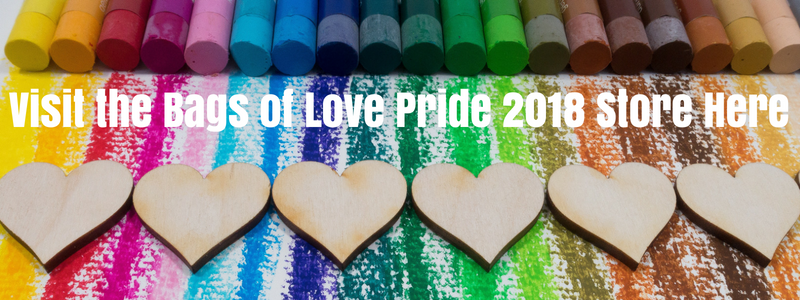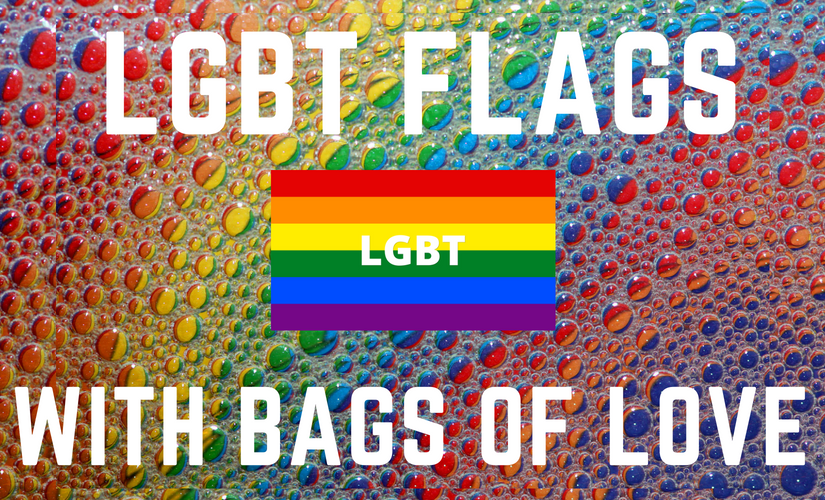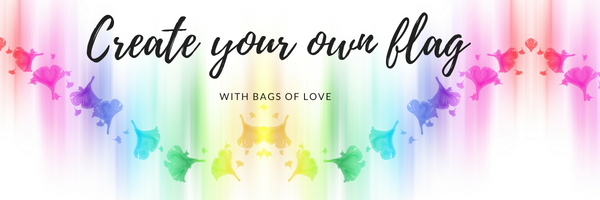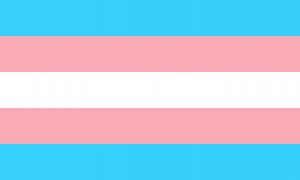The original ‘LGBT’ phrase covers a broad spectrum of sexuality and gender identity. Although the rainbow flag encompasses these four sexualities – as well as a number of others – each individual community also have their own flags of celebration and recognition. Due to the vast amount of these, we put together this handy guide. Take a below for a quick look at LGBT flags in addition to their history. Don’t forget to check out the history of the Rainbow Pride Flag in our Pride Flag 101 blog post.

This year sees the 40th anniversary of the creation of the first Rainbow Pride Flags. Much as we love the inclusive nature of this flag, we understand that there is more to the LGBTQ+ community than that. Hence, as part of Pride 2018, we have created a handy guide to help you make sense of them all. For flags outside of the LGBT initials (the Q+) please see our Celebrate Diversity blog post. Remember – if you can’t find the flag that you’re looking for, you can always create your own here.
Lesbian LGBT Flags
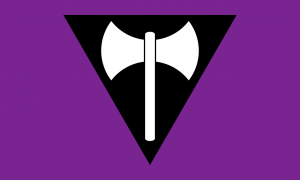
There are many images and flags which depict the lesbian community. Whilst none seem to have become hugely mainstream, one of the most common is the Traditional Lesbian Pride Flag. This flag shows the labrys, a battle axe which is double sided, to symbolise self-suffiency and strength or lesbians and feminists. This is then depicted on a black triangle, which was used to mark women as asocial or workshy in concentration camps in Nazi Germany, or who did not conform to the Nazi ideal; these were often lesbians and Romani. A purple background displays these logos.
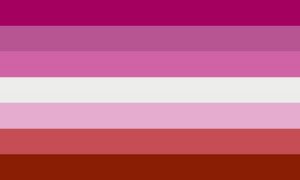
Another popular Lesbian Pride fFlag is this one showing varying stripes, in pink tones, ranging from a reddish, brownish, pink to a deep magenta.
The ‘lipstick lesbian’ community later adapted this flag, and as a result some prefer not to use this to refer to all of the lesbian community.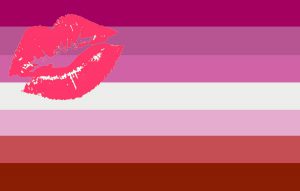
The Lipstick Lesbian adaptation of the lesbian pride flag shows the Lesbian Pride flag colours, with a lipstick mark in the top left-hand corner.
This flag is usually flown by femme lesbians – those who identify as both lesbian and feminine (who for example wear make-up, dresses and skirts etc) and are fighting the stereotype that lesbians want to be men.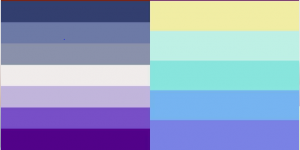
Although there doesn’t seem to be an official flag for lesbians who display more masculine traits, commonly a blue/purple adaptation of the Lesbian Pride flag is used for those who identify as the butch side of the butch-and-femme identities. Those who identify as semi-butch, or soft-butch, commonly use a flag with a pastelly greeny yellow palette.
Gay LGBT Flags
There is not one specific flag to represent homosexual males. Most commonly they fly the Rainbow Pride Flag. Consequently, many still refer to this as the Gay Pride Flag.
Community members may choose to identify with one of a number of sub-cultures within the gay culture. Grindr and other dating apps use these.
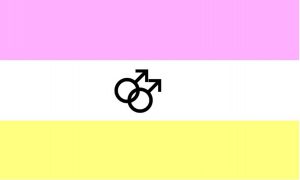
A ‘Twink’ refers to traits which display objective physical attentiveness, slim to average build, and a youthful appearance.
The Twink Pride Flag is made up of pink, white and yellow stripes, with two interlinked male symbols in the centre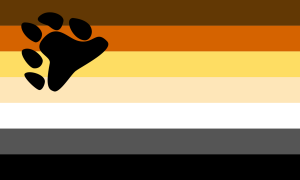
A ‘Bear’ is often a larger man, usually somewhat hairy, projecting a rugged, masculine look.
The Bear Brotherhood Flag shows a variety of stripes, from black at the bottom, through grey white yellow and orange, finishing it brown on the top. It has a bear print in the top left corner.
Bisexual LGBT Flags
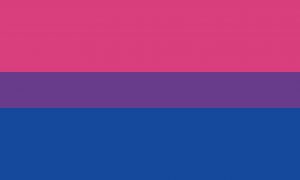
Michael Page created the Bisexual Pride Flag in December 1998. Showing a pink and blue stripe, overlapping in the centre to create a purple one. As a result of the ratio of 2:1:2, he signifies that bisexuality is not a ‘half gay half straight’ sexuality. While he designed the flag with these ratios, the flag’s aspect is not fixed. Also the seamless blending of these colours also shows that bisexual people often blend in unnoticeably within either the gay/lesbian or the straight communities. He unveiled this at the BiCafe’s party to celebrate their first anniversary.
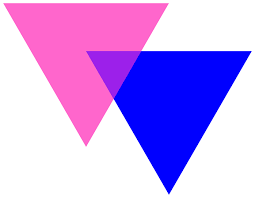
While designing the flag, Page used the colours from the bisexual triangles (also known as biangles). Another design showing pink (attraction to the same sex) and blue (attraction the opposite sex) overlapping to create a lavender (attraction to both). Theories suggest the colours represent feminine, masculine and non-binary attractions. Yet nobody knows where the biangles truly originated.
Transgender LGBT Flags
The Pride parade in Phoenix in 2000 first showed the Transgender Pride Flag. Monica Helms designed this flag in 1999. She designed the stripes at the top and bottom in the traditional baby-blue-for-a-boy colour. In addition, directly next to those are two stripes of the traditional baby-pink-for-a-girl colour. Finally, the central stripe is white, for those who are intersex, transitioning, or consider themselves a neutral or undefined gender. Furthermore, the flag was designed so that there is no upside-down, to signify finding correctness in your life.